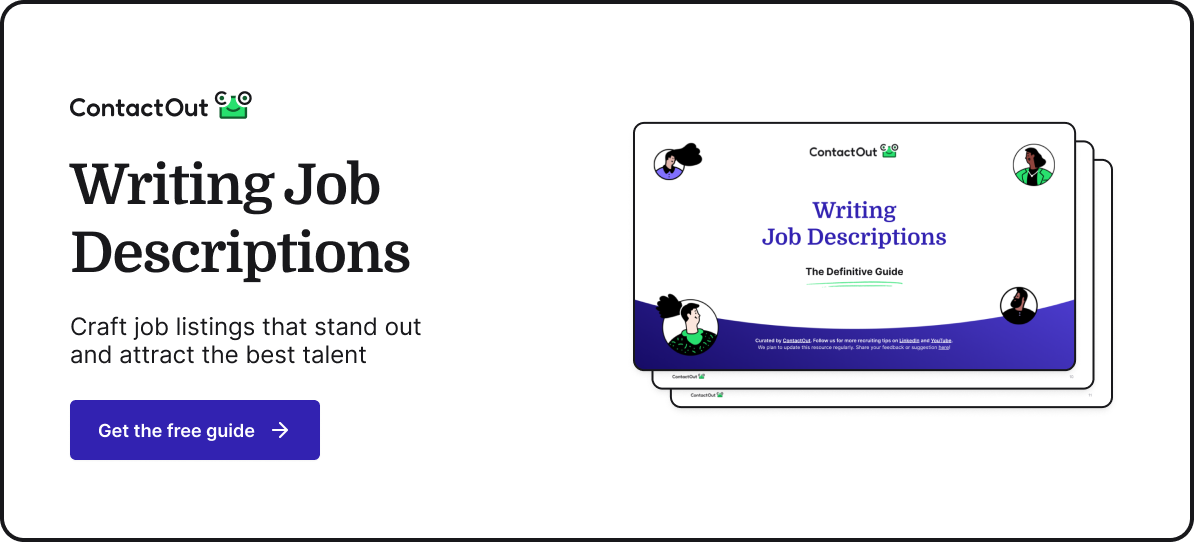This guide is all about crafting effective, inclusive, and compelling job descriptions that not only detail the role but also sell your company as an ideal place to work.
⚡ What will you learn by the end of this guide?
- The importance of job descriptions
- Steps to create a standout job description
- Examples of effective job descriptions
- Resources for further exploration
📌 Why is it important?
A well-written job description is your first opportunity to make a positive impression on potential candidates. It helps attract the right talent, sets clear expectations, and promotes inclusivity.
📜 The Role of Job Descriptions
Job descriptions are a company’s pitch to potential candidates. They:
- Set Expectations: Clearly outline the role, responsibilities, and what the company expects from the candidate.
- Showcase Culture: Through the tone and language used, job descriptions can give insights into the company’s work culture.
- Initiate the Candidate’s Journey: A well-crafted job description can make candidates visualize themselves in the role, setting the stage for their journey with the company.
🚀 Here’s the step by step to do it:
1. Title Accuracy:
- Why: The job title is the first thing candidates see. It should give a clear indication of the role and level of seniority.
- How: Avoid jargon or overly creative titles. Instead, be specific about the role and, if applicable, the technology stack or department (e.g., “Senior Backend Engineer” instead of just “Engineer”).
2. Compelling Opening:
- Why: First impressions matter. An engaging introduction can captivate potential candidates right from the start.
- How: Highlight what’s unique about your company, its mission, and the role’s impact. Mention any significant achievements or recognitions your company has received.
3. Role & Responsibilities:
- Why: Candidates need to understand what’s expected in the role and what their day-to-day will look like.
- How: List primary duties in bullet points. Describe both strategic and tactical responsibilities. Mention any teams or departments they’ll closely work with.
4. Skills & Qualifications:
- Why: This helps candidates self-assess their fit for the role.
- How: Differentiate between “must-have” skills and “nice-to-have” skills. For technical roles, specify any required technologies or methodologies.
5. Company Information:
- Why: Candidates want to know about the company’s culture, values, and growth potential.
- How: Briefly describe the company’s mission, work environment, and unique selling points. Highlight any awards, recognitions, or notable projects.
6. Salary & Benefits:
- Why: Compensation and benefits are significant deciding factors for many candidates.
- How: If possible, provide a salary range. Highlight key benefits, such as health insurance, retirement plans, professional development opportunities, and unique perks like remote work or flexible hours.
7. Formatting:
- Why: A well-structured job description is easier to read and understand.
- How: Use clear headings, bullet points, and bold text for emphasis. Ensure consistent font styles and sizes throughout.
8. Length:
- Why: Too long can be daunting, and too short might not provide enough information.
- How: Aim for a sweet spot where you provide all necessary information without overwhelming the reader. As a general guideline, 700 to 2,000 words is a good range.
🫧 Here are some examples:
Sample job description from Kloud.io:
- Opening: “Work for a company that makes work easier for everyone. Kloudio helps democratize data access for organizations, empowering teams to make data-driven decisions.”
- Mission & Achievements: “We’ve partnered with industry giants like Netflix and Rakuten, but at our core, we’re still an agile, early-stage startup.”
- Role Highlight: “As a Senior Backend Engineer, you’ll be at the forefront of our data integration efforts, working closely with our product team to craft seamless data experiences for our clients.”
Sample job description from Socratic:
- Opening: “Socratic is on a mission to redefine task management for modern teams. We believe the current tools just don’t cut it, and we’re here to change that.”
- Mission & Achievements: “We’re building a Jira-killer, a tool that unifies task management with performance intelligence. Our founders have a track record of successful exits and deep startup experience.”
- Role Highlight: “Join us as a Front-end Developer and shape the user experience of our platform. You’ll collaborate with designers and backend engineers to bring our vision to life, ensuring a seamless and intuitive user journey.”
An example of a “roles and responsibilities” section from CoScreen:

🔜 Next steps:
- Review and update job descriptions regularly to ensure they remain relevant.
- Seek feedback from current employees, especially those in the role you’re hiring for.
- Test different formats and styles to see what resonates most with your target audience.
📚 Further resources:
- 📌 Crafting Highly Effective Job Descriptions
- 📌 Writing Inclusive Job Descriptions
- 📌 Job Descriptions for Startups
- 📌 Tech Job Descriptions for Early Stage Startups
- 📌 33 Top Job Description Templates for Startups
👋 Remember, the goal is to attract the right candidates and make them excited about the possibility of joining your team. So, put in the effort, be genuine, and happy recruiting! 🌟🚀🌈













